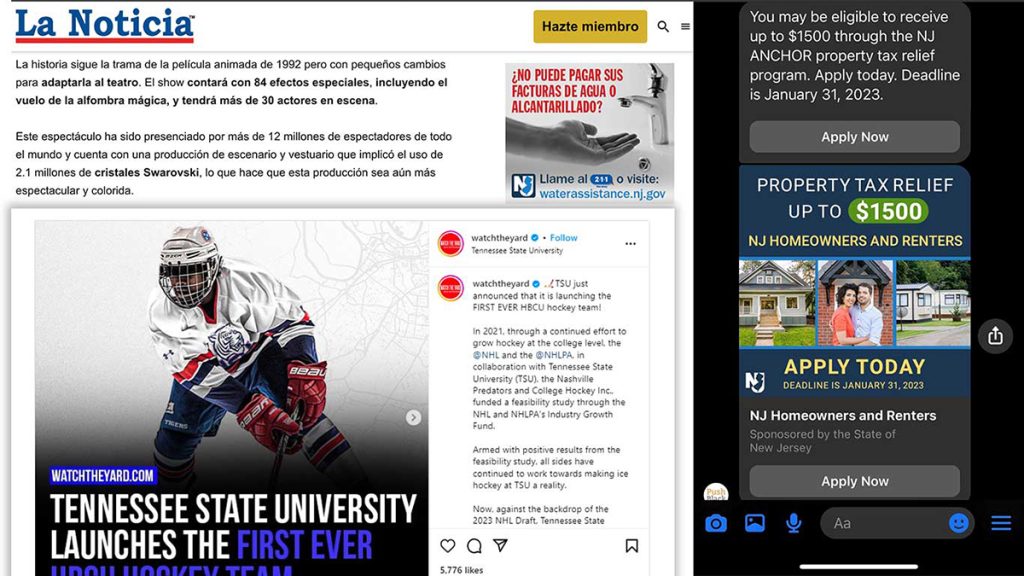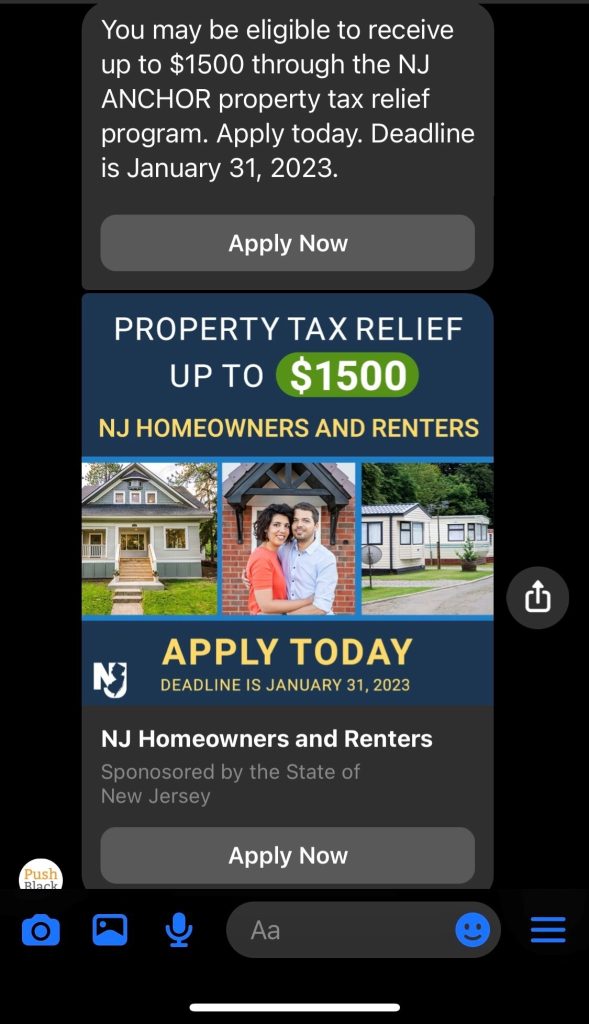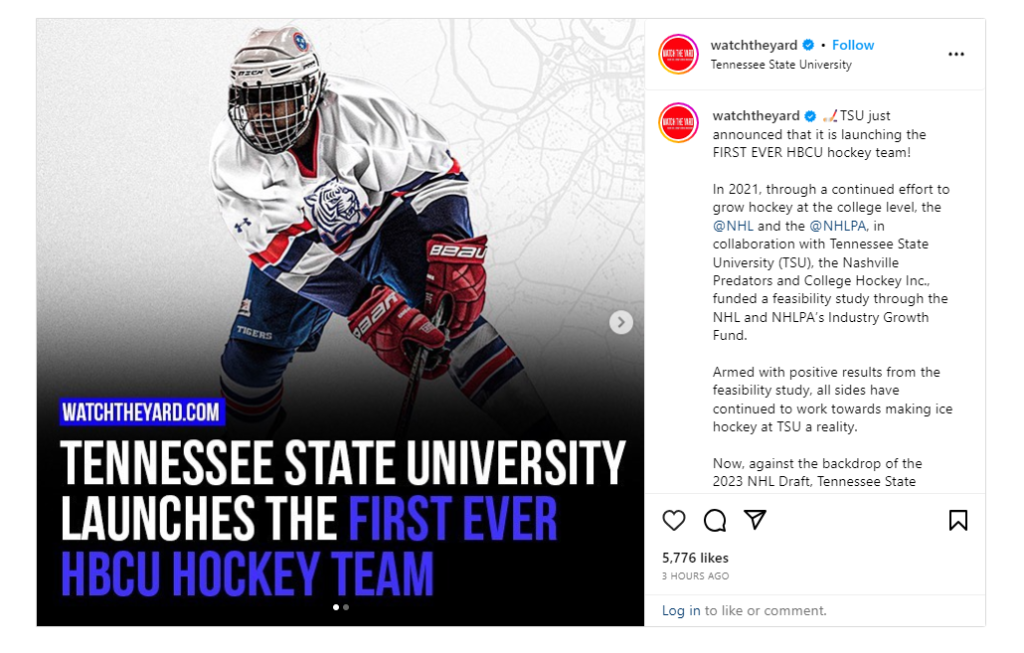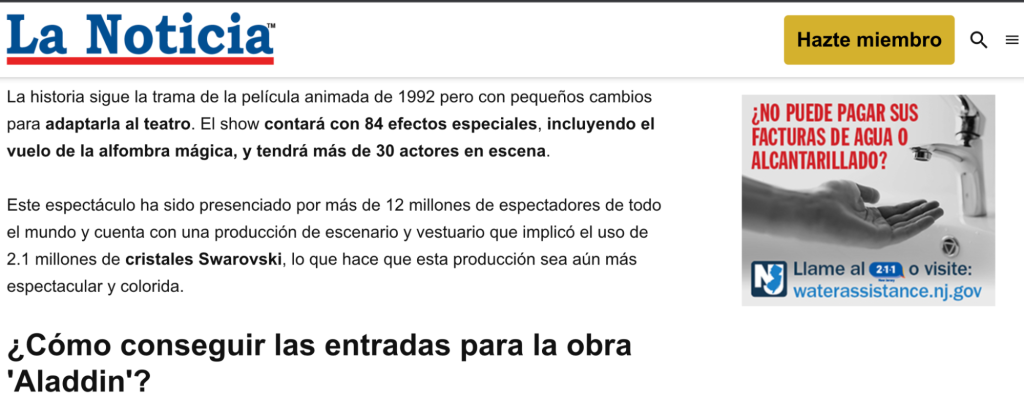
Examples of various advertising campaigns created to engage specific audiences.
The case for human-centric advertising, even as the robots come for us
We can read a story and as humans, we can understand the impact that was made. But how do we help agencies and brands make a decision about who to work with and why?
URL Media has been partnering with the Reynolds Journalism Institute (RJI) to better quantify the relationship between media and the communities they serve—and in turn convey that value to clients, sponsors and the industry at large. URL Media, founded in 2021, is a network of Black and Brown owned and led media organizations that share content and revenues to create greater sustainability for BIPOC media.
As we cross the midpoint of the engagement, we wanted to share key findings that guide our final deliverables. Notably, it is unlikely a magic bullet of measurement will emerge. More importantly, we have uncovered myriad ways advertising with community media can be successful and deliver impact that outpaces more traditional CPMs or web impressions.
The backdrop of this is a media landscape that is facing existential shifts and challenges: Facebook and Twitter no longer represent access to mass audiences or traffic in the ways they used to, nor are they trusted partners for media or campaigns.
The racial reckoning after George Floyd’s murder now faces a backlash in the form of corporate diversity officers ousted, state lawmakers refusing to support DEI efforts at publicly-backed institutions and advertising pledges largely abandoned. And then there’s the news consumption fatigue setting in and a public so disgusted with polarized rhetoric that they are simply tuning out.
A conversation between URL Media co-founder and CEO S. Mitra Kalita and VP of Sales Melanie Figueiredo dives deeper. This conversation is edited for length and clarity.
Kalita: Let’s start at the beginning. Why was there a need for a study on the currency of URL Media’s impact?
Figueiredo: The findings, even at the start of our advertising work, were that traditional media outlets and traditional agencies keep having the same conversations over and over about scale and efficiency, reach and impressions. As we began our own exploration into advertising campaigns, we saw almost immediately that the conversations aren’t telling the full story of the impact that BIPOC media can have on its audiences.
We see our partners providing content that consistently uplifts their communities. Content that can offer economic resources to help people receive funds back from local governments. Or content on how to apply for a tax rebate. Even critical health information like helping audiences get lifesaving screenings and diagnosis for issues that they weren’t aware of prior.
And no one was capturing those stories. No one was capturing those narratives, and they certainly weren’t being reported back to advertisers in a way that helped brands understand what powerful impact our media was generating across our audiences.
Kalita: One of the pieces I wrote early on in our partnership with RJI was on different metrics for different media outlets. As you’re in the process of taking those metrics and that value to the marketplace, how are you selling different things? How are you reconciling a newsletter with a very high open rate with trust in a community?
Figueiredo: Advertisers are trying to navigate an extremely polarized media climate. They are looking for resources, they are looking for guidance, they are looking for direction. URL Media comes to the table with a different language than your typical agency, with a variety of options, and a succinct way to pull all these seemingly disparate parts and put them together in a seamless solution. We’re finding that advertisers are so relieved to partner with us because we’re doing all of this difficult work on the back end so they can reach audiences that are often hard to reach but critically important.
This could mean anything from bespoke customization, taking a campaign and twisting ourselves in knots to deliver the reach and the effect that the advertiser wants, to providing a turnkey approach to multiplatform solutions. What the client receives is one report with various placements across various diverse media owners, in all the areas that the client needs to be visible, including on the ground presence for some campaigns. The partnering agencies and clients don’t have to do that heavy lifting of contacting each publisher, monitoring each platform. We’re doing all of that for them.
Kalita: What have been some of the key discoveries or learnings as you’re building the proverbial plane while we’re flying it?
Figueiredo: One of the key takeaways was when the Reynolds Journalism Institute helped us to start examining our data. What we found was that each of our publishers was telling a slightly different story. We had to start comparing apples to oranges to berries to bananas, and, again, make that a seamless narrative and offering. That’s been incredibly insightful and has also validated why this has been so challenging in the past for other companies to replicate.
Another thing that we’ve discovered is that we have to start examining our own advertising campaigns with a more discerning lens.
We had to take off the glasses of ‘what are the traditional metrics’ while still reporting those metrics to our clients. We had to start scrutinizing how our audiences were actually engaging with the content of our campaigns.
Kalita: Do you have any examples of this?
Figueiredo: One of our most successful campaigns was the New Jersey ANCHOR campaign, which was a tax rebate campaign aimed at homeowners and renters. After we got involved in the campaign, the state of New Jersey started to see between 1,000 and 5,000 applications a day. The campaign was so successful that they renewed only two weeks into the campaign running and ultimately received over 1.5 million applications for the program with 1,300 people walking into the office on the last day of the program.
Nowhere in there did I mention CPMs, reach or scale. What I talked about was actual action taken by media users because they were affected by an advertising campaign that they saw.

Another fantastic campaign that we just wrapped up was done in conjunction with the NHL. We were charged with helping tell the story of the very first hockey program at an HBCU. It will be launching in conjunction with Tennessee State University. The NHL saw a really unique way to reach Black and brown audiences to help spread this news.
We partnered with Watch the Yard, one of our newest partners to disseminate the story and supplemented their nationwide reach with underrepresented pockets of Black and Brown audience in the midwest, through partnering with the Oklahoma Eagle and the Sahan Journal on complementary media placements.
Our press release, developed by TSU and edited by URL, received 70% higher pickup than the average press release on Presswire. And again, I’m not talking about CPMs or scale or metrics. I’m talking about the effect in reaching Black and Brown communities.
Who’s counting that besides us?

Kalita: It can be so hard to measure. We’ve brought in a student with RJI to assist with some of the data work. What’s that process been like?
Figueiredo: Shiyu Yuan has been fantastic. She has been able to curate and collect data across 21 different partners, which is no small feat. We had been able to dive into that work very preliminarily in order to get a sense of our audiences.
There’s so much of that narrative that we were missing. We aren’t quite sure how long audiences are spending on site. We aren’t quite sure cumulatively who our demo is for the entire network. We aren’t quite sure where we’re over-indexing on particular platforms. The student has been able to come in with a very fresh lens. She is finding these areas and gaps and holes of information that we can then plug in order to make a more succinct story of what our offering is.
Kalita: There was one staff meeting where suddenly our monthly users increased, exponentially, no? Was this her doing?
Figueiredo: It was a culmination. Our director of operations was also doing deep dives on our media kit data at the same time so that it could be verified by both parties.
All of a sudden we were finding all these missing platforms, such as websites, newsletters and messaging services, that we had not plugged in. And the lift was exponential. It was almost double what we had been capturing in the past. Today we have over 20 million users across URL Media partner platforms.
Kalita: Can you share more about how you’re thinking about selling in an ever-changing media landscape? From pitch decks to platforms to partner education, are there any hacks?
Figueiredo: One of the biggest takeaways I have at this point is how much power is deeply embedded in the human-centric and human-driven approach versus ad tech. We are able to be nimble. We are able to respond with a really high level of emotional intelligence.
In this marketplace where advertisers can work on self-serving platforms like Facebook, our ability to have a relationship with our advertisers, to speak to them on a regular basis, to continue to sell them in and help them fall in love with URL is everything. They are getting a quality and a level and a touch of service that they are not going to get by going to Google or Facebook.
That, and being nimble, has proven to be completely invaluable. I’ve created probably 27 custom pitch decks or more since I started. And they’re working. They’re closing deals.
Even though they are a lift internally, and even though we have examined AI and ways in which AI can put together these presentations, there’s a bridge that needs to be walked between the sales materials and making sure that you are actually connecting with the buyer.
And AI cannot always do that. It’s where the human-centric approach has really been working for us.
Kalita: We’ve also talked about an emerging set of tools to measure the impact of community instead of one measurement. One area that keeps coming up is education of the various stakeholders. Who are they and who do we need to convince of our unique value?
Figueiredo: The easiest stakeholders to identify are the clients, the brands, the agencies. We’re having to act as activists in all of these meetings and continue to bang the drum about who we are and bring that invisible work that we’re doing to light.
Even publishers need language to help communicate the value of what they’re doing. They’re so used to being turned down by agencies for all the reasons that we’ve discussed such as not having scale or being too hyper local. Shoring publishers up with the positioning and the language to help them make the case about being involved in URL and how much power that they have, has really been beneficial.
Reminding publishers how much they’re achieving is powerful. Each of our advertising campaigns is continuing to deliver between 150 and 200% above goal for our clients because the publishers are so invested in the success of these campaigns. Reminding publishers that their excellence is being seen—that it needs to continue to be touted at a greater level to clients and to ad agencies when they’re so used to being beaten down by the same stakeholders. That really has been key in helping us achieve the ‘success’ that advertisers want to see.

Kalita: How are you reaching advertisers with this message? We need them, we’re selling to them, but we’re also trying to create a bit of a revolution here. So how do we spread this gospel?
Figueiredo: It’s a tricky road to navigate because diverse-owned media tends to be this echo chamber. Those who are involved in it completely get it. We understand the importance of this work. Yet oftentimes the stakeholders are really invested in upholding a stale and traditional media model.
We have such an appetite for disruption when it comes to things like tech, everybody wants to get in on tech disruption. Everybody’s so excited to throw money behind it. But when it comes to things like media, unless it’s being performed by a robot, I don’t know that there’s a lot of human centric disruption that is being embraced wholeheartedly. You have to think about who the stakeholders are in traditional media and what they have to lose if there’s disruption.
Continuing to be an activist in space in a way that helps agencies not feel threatened but understand that we are partners in this effort. Really brands are already behind, there are so many brands that want to get behind diverse-owned media and they cannot figure out how to get there.
We help them understand that they are going to get so much more depth of engagement across trusted platforms. That has certainly been one of the tools that we use when we’re having these conversations.
Kalita: Any other thoughts on what we might end up with in terms of measuring impact?
Figueiredo: We are just launching some work with Impact Architects, to explore customizing an impact tracker that helps quantify the media our partners are disseminating.
Ideally, our hope is to build a comprehensive impact framework and tracking system so that it can easily demonstrate real-world effects that result from the publication and distribution of its journalism. URL will use this system as the backbone to create a URL Currency of Impact.
The really interesting piece of this work is that we’re taking something that feels really nebulous and feels like it’s really steeped in language and lens and we’re trying to make it quantifiable, which is this idea of impact. We can read a story and as humans, we can understand the impact that was made.
But how do you put this into a calculator that helps agencies and brands make a decision about who to work with and why? And so that is our hope at the end of this project, is to be able to quantify, even if it’s in some small way, the power of the local community and BIPOC driven media.

Comments